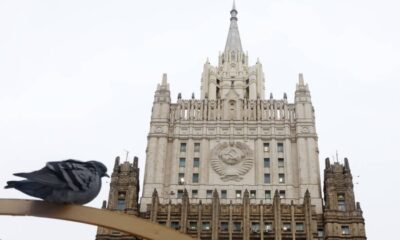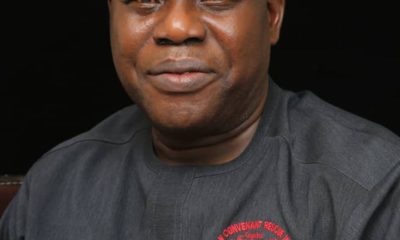Global Issues
The Power of Feature Writing: How Journalism can Impact the World -By Kamaldeen Aishat
Henrietta Lacks’ story definitely raises some serious ethical questions. One question is whether doctors and hospitals did enough to protect their patients and families. Another question is whether companies should have been allowed to profit from HeLa cells when they were collected without permission. There’s no simple answer to these questions, and people are still debating them today.

How can a feature story change the world? Feature writing is a type of journalism that goes beyond the facts to tell stories with depth and details. By delving deeper into a topic and bringing it to life with vivid storytelling, feature writers can take us on a journey that we never expected. From humble beginnings in the pages of newspapers, feature writing has evolved to become a powerful tool for sharing stories across all forms of media.
The book ‘The Emperor of All Maladies’ takes readers on an emotional journey through the history of cancer research, from the early theories to the latest advances. It also explores the experiences of cancer patients and their families, bringing a human element to the story of this devastating disease.
The book is divided into three main parts. The first part, titled “The Wretched of the Earth,” explores the early days of cancer research when little was known about the disease and treatments were often ineffective. The second part, titled “The Militant Empiricists,” focuses on the discoveries made by scientists and doctors in the 19th and 20th centuries. These parts provide a fascinating glimpse into the evolution of cancer research and the struggle to find effective treatments.
It paints a vivid picture of Henrietta Lacks and the ethical issues surrounding the use of HeLa cells. The first part of the book, ‘The Wretched of the Earth,’ begins with the story of Henrietta Lacks, a woman whose cancer cells, known as HeLa cells, were taken without her consent and used in numerous medical studies and discoveries.
Henrietta Lacks was a poor African American woman from rural Virginia who had five children. In 1951, she went to the hospital with abdominal pain and was diagnosed with cervical cancer. While she was being treated, doctors took samples of her cancer cells without her knowledge or consent. Those cells, which became known as HeLa cells, were a medical breakthrough because they could be grown and reproduced indefinitely in a laboratory. This was the first time this had ever been done, and HeLa cells have since been used in countless scientific studies and treatments.
At the time when Lacks’ cells were taken, there were no laws requiring patients to give informed consent for medical research. Because of this, Lacks and her family were never asked for their permission to use her cells, and they did not receive any compensation for their use. This raises important questions about who should have control over and benefit from the use of human tissue in research. Lacks’ family also faced discrimination and did not have the same access to healthcare as others. These issues highlight the need for ethical guidelines around the use.
The story of Henrietta Lacks raises a lot of ethical questions that don’t have easy answers. One of the main questions is whether the medical community should have done more to protect the rights of patients and their families. Another question is whether it’s ethical for companies to profit from HeLa cells, given that they were taken without the consent of Henrietta Lacks or her family. These issues continue to be debated by medical and legal experts, and there are no simple solutions.
Henrietta Lacks’ story definitely raises some serious ethical questions. One question is whether doctors and hospitals did enough to protect their patients and families. Another question is whether companies should have been allowed to profit from HeLa cells when they were collected without permission. There’s no simple answer to these questions, and people are still debating them today.
In the second section of ‘The Emperor of All Maladies,’ entitled ‘The Quiet Work of Discovery,’ we learnt about the scientists who studied HeLa cells and made groundbreaking discoveries about cancer and other diseases. One of these scientists was George Gey, who isolated HeLa cells and began studying them. Gey and other scientists worked tirelessly to understand these cells and what they could teach us about cancer. They made many important discoveries, including how viruses can cause cancer and how chromosomes are involved in cancer development.
One of the most notable findings made using HeLa cells was the link between viruses and cancer. In the 1950s, scientists were aware that some viruses could cause disease, but it was unknown whether they could cause cancer. With the help of HeLa cells, researchers discovered that certain viruses, like the Epstein-Barr virus, could cause cancer in humans. This discovery was a major leap forward in our understanding of cancer and led to new treatments and vaccines. It also raised concerns about the safety of blood transfusions and other medical procedures.
The third and final section of the book, “The Human Factor,” looks at the human side of cancer. It explores the experiences of patients and their loved ones, both physically and emotionally. This section looks at how cancer can change people’s lives and relationships. It also examines the ways in which people cope with the disease. This section offers a personal and intimate look at the human impact of cancer.
The story of Mary Lasker, a woman who lost her husband to cancer and became a fierce advocate for cancer research, is one of the most moving in this section. After her husband’s death, Lasker made it her mission to raise awareness and funding for cancer research. She fought tirelessly to change the way cancer was perceived and treated, and her efforts helped bring about major breakthroughs in cancer treatment and prevention. Lasker’s story is a testament to the power of determination and the difference that one person can make.
Mary Lasker’s story is an inspiring example of the human side of cancer and the power of advocacy. In the 1950s, Lasker founded the American Society for the Control of Cancer, which later became the American Cancer Society. She also helped to establish the National Institutes of Health (NIH) and the National Cancer Institute (NCI). Lasker’s efforts helped to bring about major advances in cancer research and treatment, including the development of chemotherapy and the discovery of the link between smoking and cancer.
In summary, the story of HeLa cells is a powerful reminder of the importance of scientific research and the human face of cancer. It’s a reminder that every scientific discovery has a human story behind it, and that cancer is not just a biological or medical issue, but a deeply personal one. Lasker’s story perfectly captures this, and her legacy is a testament to the power of one person to make a difference.


















